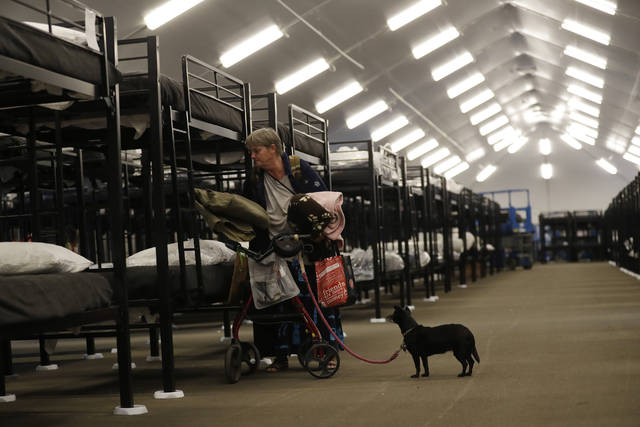Homelessness rises slightly despite strong economy, federal report finds



WASHINGTON — Despite the booming economy, homelessness in the United States rose slightly for the second year in a row, with spikes in high-rent cities like New York and Seattle, according to an annual report released Monday by the Department of Housing and Urban Development.
WASHINGTON — Despite the booming economy, homelessness in the United States rose slightly for the second year in a row, with spikes in high-rent cities like New York and Seattle, according to an annual report released Monday by the Department of Housing and Urban Development.
Overall, the national rate of homelessness rose by a modest 0.3 percent to 552,830 people without stable living conditions, the report found. But that represented the second annual increase after seven straight years of declines — the result, in part, of rapidly increasing housing costs that have only recently shown signs of leveling off.
“I’m not sure victory is the right word to use here,” said Ben Carson, secretary of HUD. He attributed some of the increase to about 4,000 people who have been temporarily displaced from their homes, including by natural disasters.
But he also blamed the “headwinds of rising rents” for stubbornly high homelessness rates, which remain relatively flat despite what economists have called the most favorable labor market in generations.
The report relies on a locally conducted census of people in shelters and living outside, and those reporting chronic problems in finding shelter. Its conclusions have significant limitations.
A handful of communities, including San Francisco, which has suffered a major increase in homelessness in recent years, did not participate in the 2018 national count. And some of the data presented Monday is nearly a year old, relying on a “point in time” measurement culled from a head count taken on a single night each January.
In all, 31 states and th. District of Columbia reported decreases in homelessness while 19 states reported increases, according to the report.
Hawaii was among the states reporting decreases in homelessness, with a decline of 9.6 percent between 2017 and ‘18, according to the report. The state data used in the federal report was previously released by Gov. David Ige in May.
In 2018, there were 6,530 individuals listed as homeless, down 690 from 2017. Among the 6,530 individuals are 532 veterans and 189 unaccompanied youth. More than 53 percent were not living in emergency shelters or transitional housing programs, putting Hawaii at No. 4 in U.S. behind California, Oregon and Nevada.
The most notable increase took place in King County, Washington, which includes Seattle. Homelessness rates there rose by 4 percent. Homelessness increased by 2.8 percent in New York, which has been struggling to create additional affordable housing units while coping with a possible federal takeover of its troubled public housing authority.
Historically, Los Angeles County has experienced major increases in homelessness. But this year, the homeless rate declined by 4.7 percent, thanks, in part, to stepped-up efforts by city officials.
The long-term trends are positive. Homelessness among military veterans declined by about 5.4 percent, attributed to an effort, begun during the Obama administration, to encourage development of supportive housing for former service members. Rates of family and youth homelessness fell slightly over the last year.
But several states have had major increases in homelessness over the last decade, a crisis driven by gentrification and the lack of affordable apartments for poor and working-class city dwellers.
Since 2007, New York has experienced a nearly 47 percent increase in homelessness, despite efforts by state and local officials to reverse it.
Under Carson, the federal housing department has largely remained on the sidelines of the affordable housing crisis. It has focused on reducing zoning issues and other barriers to construction, over which the federal government has little direct authority.
Mick Mulvaney, director of the Office of Management and Budget who was named last week to become President Donald Trump’s interim chief of staff, has proposed deep cuts to public housing and voucher programs for the poor in this year’s budget. They were largely restored by Congress.
Carson, a former surgeon who ran for president in 2016 as a fiscal conservative, praised cooperation between federal and local officials — and particularly initiatives that prioritize housing placement for adults with mental health issues.
But the Trump administration has not proposed significant funding increases for such programs, and Carson would not commit to requesting additional funding from Trump to tackle the problem.
“Budgeting obviously needs to take into account the fact that there are limited dollars,” Carson said during a conference call with reporters Monday. “But this is a significant problem.”
© 2018 The New York Times Company


